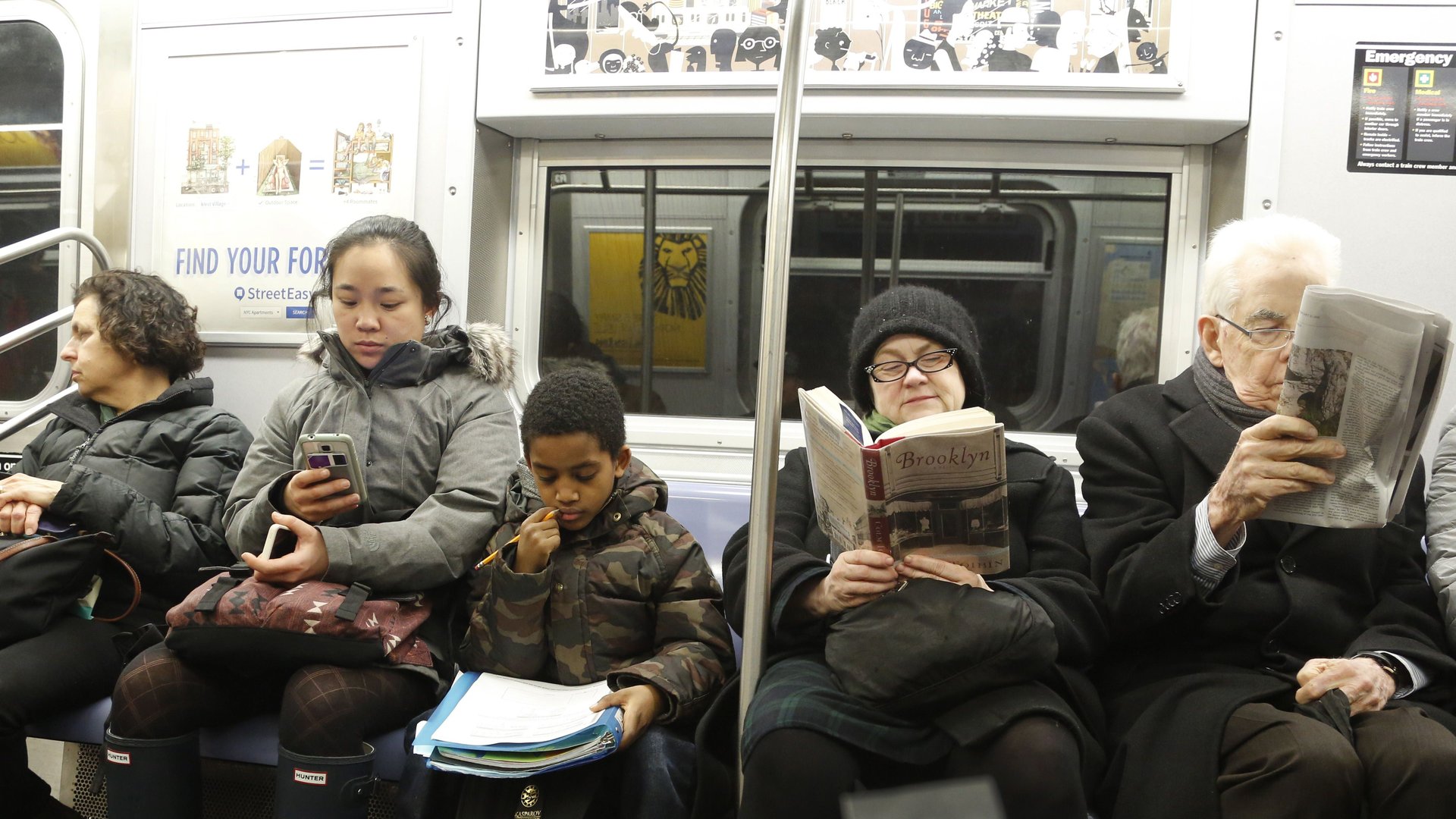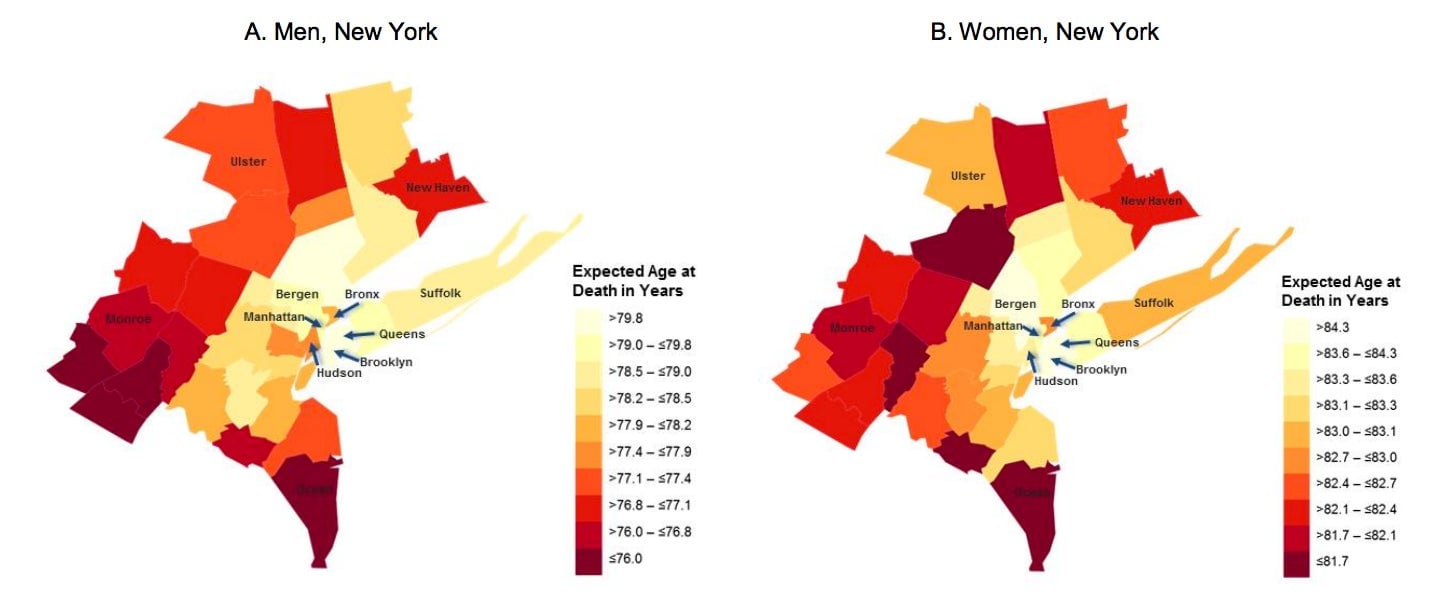“New York values” help everyone live longer—especially the poor
A new study published by the Journal of the American Medical Association (JAMA) reached the grim conclusion that life expectancy for America’s poorest people is between 10 and 15 years less than that of the wealthiest. One might think the gulf would be widest in a place like New York City—where income inequality appears, at least on the surface, to be terribly stark.


A new study published by the Journal of the American Medical Association (JAMA) reached the grim conclusion that life expectancy for America’s poorest people is between 10 and 15 years less than that of the wealthiest. One might think the gulf would be widest in a place like New York City—where income inequality appears, at least on the surface, to be terribly stark.
In fact, the birthplace of Occupy Wall Street has one of the narrowest gaps in life expectancy between rich and poor nationwide (4.8 years between the richest quartile and the poorest quartile, compared to a national average of 7). And life expectancy for poor people in New York City and its immediate suburbs is the highest among the poor of the nation’s 100 largest cities—an average of 81.8 years (79.5 for men, 84 for women). This puts poor New Yorkers’ life expectancy above the national mean for all Americans—78.8 years in 2013, according to the National Center for Health Statistics.
They say stress kills, and New Yorkers are a notoriously stressed-out bunch; the poor more than any. So what’s the deal with JAMA’s findings? How does all that rent-scrimping, strap-hanging, coffee-guzzling, and pavement-stomping factor into longevity?
As with most things in New York, it comes down to money. The city is one of the most heavily taxed in the nation, and a good portion of those funds go to social services for low-income New Yorkers. The study found that local government spending was one of the factors most strongly associated with longer lifespans for the poor. The Department of Social Services is the city agency that receives the second-largest share of tax dollars (after the Department of Education), and “medical assistance” is the third-largest expense category citywide ($4.74 billion in 2015).
Additionally, New York is what experts in the public-health community call a behaviorally healthy city (relatively speaking). “The nation’s major diseases have more to do with unhealthful behaviors—for example, smoking—than health care,” wrote Dr. Steven H. Woolf and Jason Q. Parnell in a JAMA editorial published alongside the study.
Aggressive anti-smoking policy and a ban on trans fats instituted under former mayor Michael Bloomberg have likely played a part. (The city places the second-highest tax on cigarettes in the country.) In 2013, researchers with the city’s Department of Health and Mental Hygiene estimated that a decreased incidence of heart disease (-25.9%)—often associated with poor diet and tobacco usage—contributed the most to life-expectancy gains between 2001 and 2010, a decade largely overseen by Mayor Bloomberg and his health advisers.
Life expectancy rose across the New York City area from 2001 to 2014 (the time period studied by the researchers). Generally, the gains were greatest for woman and those with lower incomes.
A map from the report vividly shows the life expectancy advantage that poor residents of New York and its immediate suburbs have over those who live further from the city. (The maps show the life expectancy of people in the bottom income quartile.)

Even the things that make New York life seem unbearable to some—sky-high rents and packed subway cars—may be contributing to its relatively positive outcomes for the poor. Nationwide, the study found, higher median home values and population density are strongly correlated with longer lifespans for the poor—as is a higher percentage of immigrants, another advantage of New York City.
Whether you consider New York City’s progressive public policy an example of “New York values” at work or one of meddlesome nanny-state politics, the net effect for the health of the city’s poor appears to be positive.